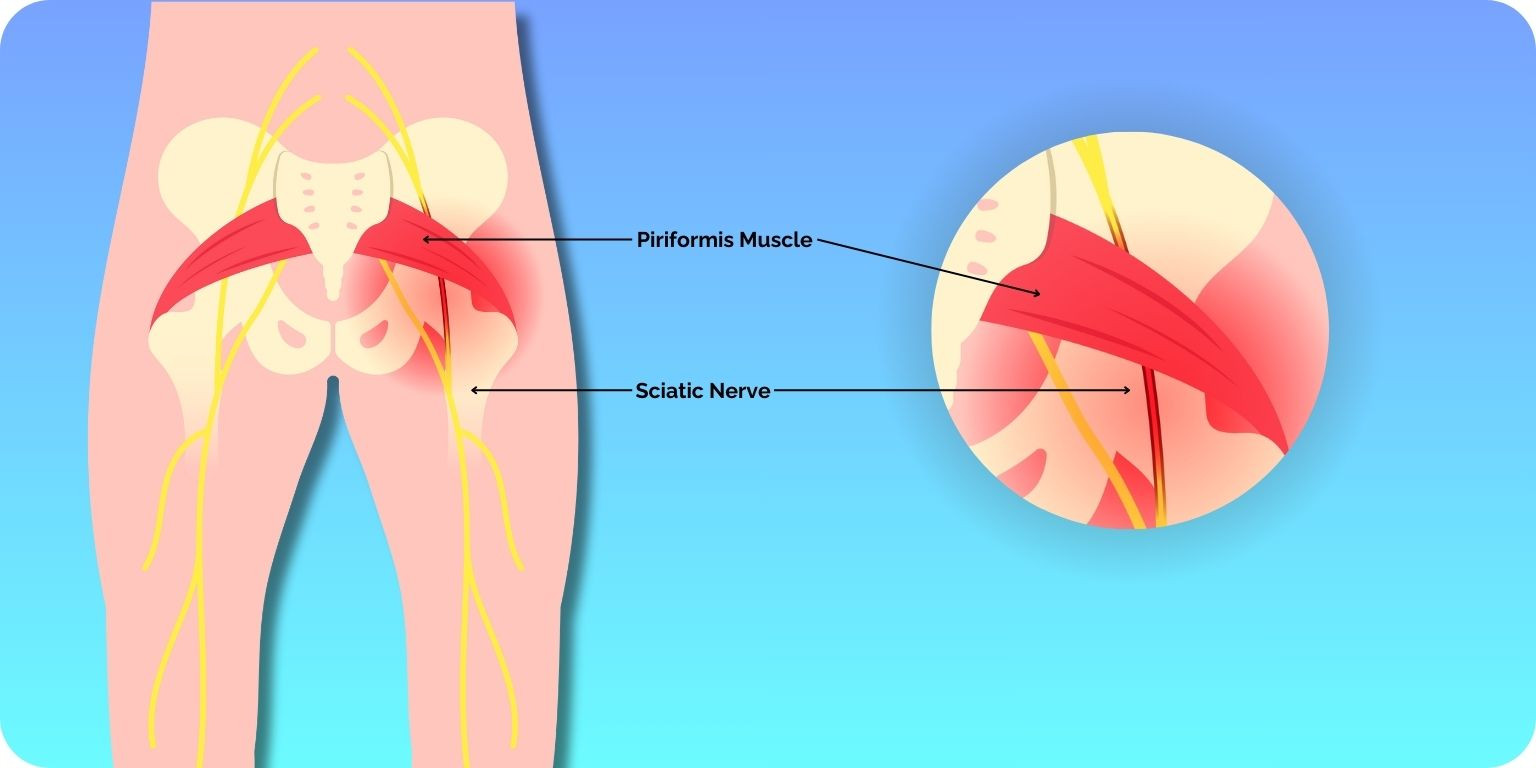Relieve Sciatica Pain with the Modified Piriformis Stretch
Sciatica pain can disrupt your daily life—but relief might start with one simple stretch. Discover how the modified piriformis stretch can help ease nerve tension and get you moving again.
Key Takeaways:
- Sciatica is often caused by irritation of the sciatic nerve, sometimes linked to tightness in the piriformis muscle.
- The modified piriformis stretch is a gentle and effective way to relieve pressure on the sciatic nerve.
- This stretch can be done at home and is safe for most people with mild to moderate sciatic discomfort.
- Consistency and proper form are key for long-term relief.
- For persistent pain, supervised physical therapy ensures safe, targeted recovery.
What is the modified piriformis stretch, and how does it help relieve sciatica pain?
The modified piriformis stretch is a seated or lying stretch designed to target the piriformis muscle, which lies deep in the buttocks and can irritate the sciatic nerve when tight or inflamed. By gently lengthening this muscle, the stretch helps reduce nerve compression, ease lower back and leg discomfort, and restore mobility—making it a simple yet powerful tool for sciatica relief.
Understanding Sciatica and the Piriformis Muscle
Sciatica refers to pain radiating along the sciatic nerve, which travels from your lower back down through your legs. One common cause is piriformis syndrome, where the piriformis muscle becomes tight or spasms, putting pressure on the sciatic nerve.
The piriformis muscle plays a key role in hip rotation and stability, especially during walking and standing. When it becomes irritated, it can contribute to classic sciatica symptoms like:
- Pain in the buttock or lower back
- Numbness or tingling down the leg
- Difficulty sitting for long periods
- Pain that worsens with movement
How to Do the Modified Piriformis Stretch (Safely)
Here’s a beginner-friendly version of the stretch, perfect for at-home relief:
Seated Modified Piriformis Stretch (Chair Version)
- Sit upright in a sturdy chair with feet flat on the ground.
- Cross your right ankle over your left knee, forming a “figure 4” shape.
- Slowly lean forward from the hips (not the back), keeping your spine straight.
- Hold the stretch for 20–30 seconds—you should feel a stretch in the buttocks.
- Return to the starting position and repeat on the other side.
- Perform 2–3 rounds per side, once or twice daily.
Tip: Avoid bouncing or forcing the stretch. If you feel sharp or shooting pain, stop and consult a physical therapist.
Stretching Tips for Long-Term Sciatica Relief
- Warm Up First: Try light walking or heat therapy before stretching to loosen up the muscles.
- Be Consistent: Stretching a few times per week provides cumulative benefits.
- Pair With Strengthening: Combine with core and hip exercises for better support.
- Listen to Your Body: If pain worsens, it’s time to seek professional evaluation.
When to Seek Help from a Physical Therapist
If sciatica pain lingers for more than a few weeks or limits your mobility, guided rehab from a physical therapist can make a significant difference. At Synaptic Rehabilitation, our therapists develop tailored treatment plans that go beyond stretching—addressing muscle imbalances, posture, and movement patterns to help you recover fully and prevent future flare-ups.
Get Personalized Sciatica Relief in Bridgewater, NJ
If you’re struggling with sciatica, the right stretch is just the beginning. Our physical therapy clinic in Bridgewater, NJ offers 1-on-1 sessions focused on targeted pain relief and mobility restoration. Whether you’re dealing with piriformis syndrome, herniated discs, or chronic back pain, our team is here to help.
Call us today at 908-801-6425 or visit our clinic at 1200 Route 22 East, Suite 4, Bridgewater, NJ 08807. Let’s work together to get you moving pain-free again!
Steven Cheung, DPT
Steven is the founder and lead physical therapist at SYNAPTIC Rehabilitation. He earned a BS in Exercise Science Applied Kinesiology from Rutgers University in New Brunswick, NJ and his Doctorate degree from American International College in Springfield, MA. Steven specializes in movement disorders such as Parkinson’s disease and many other neurological disorders. Outside of practicing physical therapy Steven enjoys time with his wife, running, and staying active.

